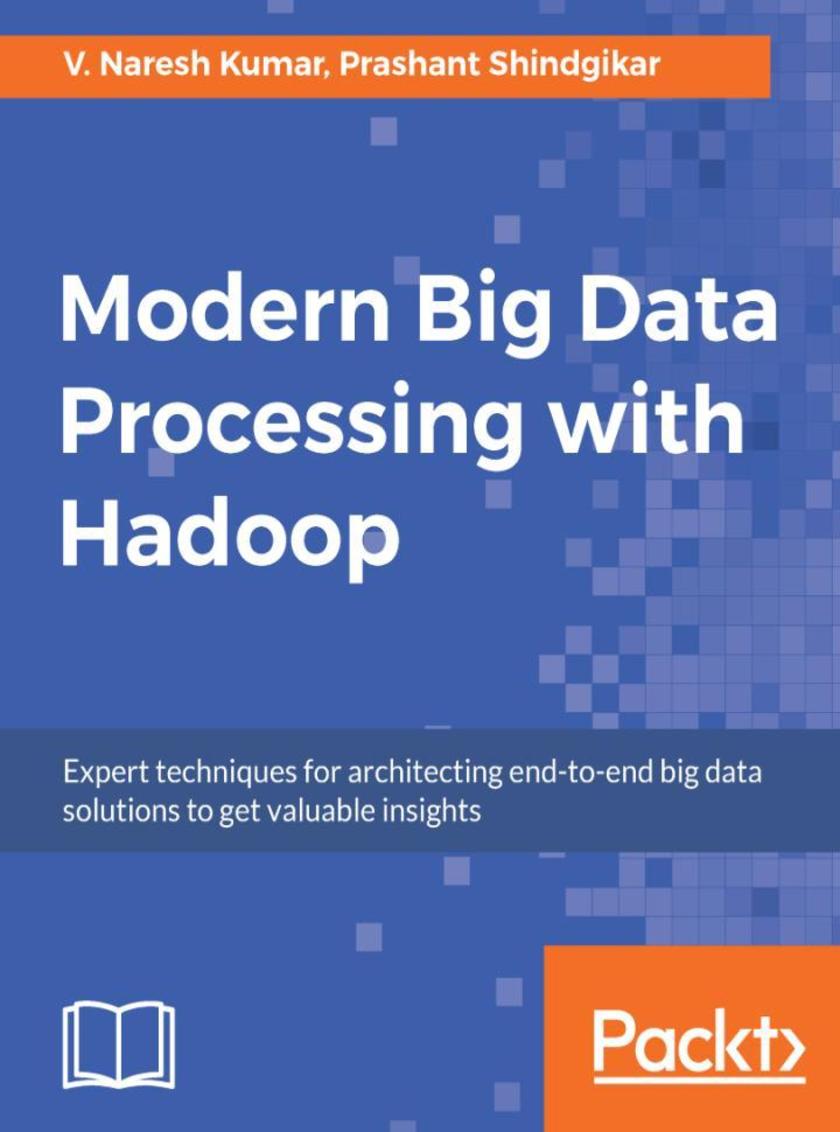
Modern Big Data Processing with Hadoop
¥73.02
A comprehensive guide to design, build and execute effective Big Data strategies using Hadoop About This Book ? Get an in-depth view of the Apache Hadoop ecosystem and an overview of the architectural patterns pertaining to the popular Big Data platform ? Conquer different data processing and analytics challenges using a multitude of tools such as Apache Spark, Elasticsearch, Tableau and more ? A comprehensive, step-by-step guide that will teach you everything you need to know, to be an expert Hadoop Architect Who This Book Is For This book is for Big Data professionals who want to fast-track their career in the Hadoop industry and become an expert Big Data architect. Project managers and mainframe professionals looking forward to build a career in Big Data Hadoop will also find this book to be useful. Some understanding of Hadoop is required to get the best out of this book. What You Will Learn ? Build an efficient enterprise Big Data strategy centered around Apache Hadoop ? Gain a thorough understanding of using Hadoop with various Big Data frameworks such as Apache Spark, Elasticsearch and more ? Set up and deploy your Big Data environment on premises or on the cloud with Apache Ambari ? Design effective streaming data pipelines and build your own enterprise search solutions ? Utilize the historical data to build your analytics solutions and visualize them using popular tools such as Apache Superset ? Plan, set up and administer your Hadoop cluster efficiently In Detail The complex structure of data these days requires sophisticated solutions for data transformation, to make the information more accessible to the users.This book empowers you to build such solutions with relative ease with the help of Apache Hadoop, along with a host of other Big Data tools. This book will give you a complete understanding of the data lifecycle management with Hadoop, followed by modeling of structured and unstructured data in Hadoop. It will also show you how to design real-time streaming pipelines by leveraging tools such as Apache Spark, and build efficient enterprise search solutions using Elasticsearch. You will learn to build enterprise-grade analytics solutions on Hadoop, and how to visualize your data using tools such as Apache Superset. This book also covers techniques for deploying your Big Data solutions on the cloud Apache Ambari, as well as expert techniques for managing and administering your Hadoop cluster. By the end of this book, you will have all the knowledge you need to build expert Big Data systems. Style and approach Comprehensive guide with a perfect blend of theory, examples and implementation of real-world use-cases
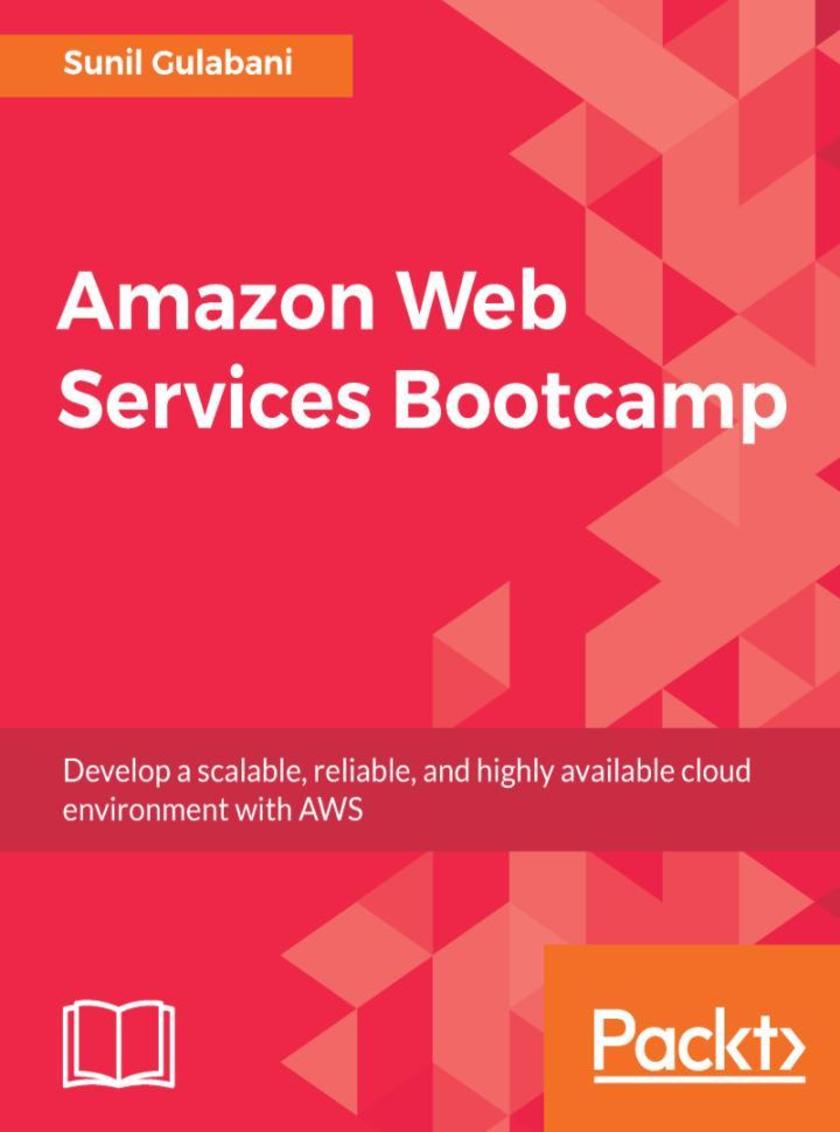
Amazon Web Services Bootcamp
¥73.02
This fast-paced guide will quickly enhance your skills to develop a highly scalable Cloud environment About This Book ? Efficiently build a highly scalable and reliable cloud environment for your applications with AWS ? Leverage the various AWS components and services to build a secure, reliable, and robust environment to host your applications on ? This quick-start guide will quickly enhance your skills to develop highly scalable services Who This Book Is For This book is for IT professionals and system administrators looking to design, deploy, and manage your applications and services on the AWS cloud platform. It’s also ideal for developers looking to build highly scalable cloud-based services. A basic understanding of AWS would be beneficial. What You Will Learn ? Find out about IAM to access AWS services securely ? Explore EC2 (virtual server) and scale up/down your application based on heavy traffic ? Learn about unlimited data storage service S3 and host a static website within minutes ? Get to grips with Relational Databases and NoSQL databases under the AWS ecosystem ? Understand the caching mechanism ? Get to know about notifications service and monitor AWS services ? Secure and troubleshoot your AWS architecture In Detail AWS is at the forefront of Cloud Computing today. Businesses are adopting AWS Cloud because of its reliability, versatility, and flexible design. The main focus of this book is teaching you how to build and manage highly reliable and scalable applications and services on AWS. It will provide you with all the necessary skills to design, deploy, and manage your applications and services on the AWS cloud platform. We’ll start by exploring Amazon S3, EC2, and so on to get you well-versed with core Amazon services. Moving on, we’ll teach you how to design and deploy highly scalable and optimized workloads. You’ll also discover easy-to-follow, hands-on steps, tips, and recommendations throughout the book and get to know essential security and troubleshooting concepts. By the end of the book, you’ll be able to create a highly secure, fault tolerant, and scalable environment for your applications to run on. Style and approach This book is all about fast and intensive learning. That means we don’t waste time helping you get started. The new features provided by AWS resources are being covered with highly-effective examples to develop new things, demonstrating different ways to create and use the AWS resources efficiently.
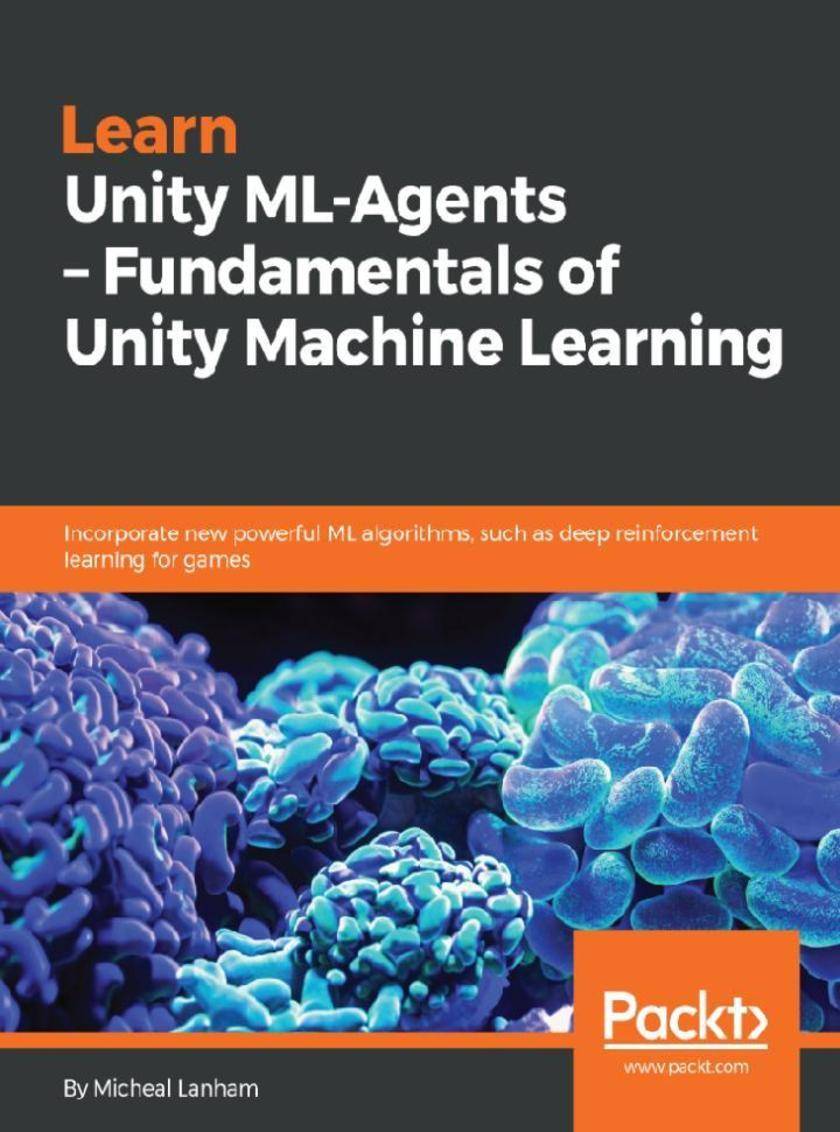
Learn Unity ML-Agents – Fundamentals of Unity Machine Learning
¥54.49
Transform games into environments using machine learning and Deep learning with Tensorflow, Keras, and Unity About This Book ? Learn how to apply core machine learning concepts to your games with Unity ? Learn the Fundamentals of Reinforcement Learning and Q-Learning and apply them to your games ? Learn How to build multiple asynchronous agents and run them in a training scenario Who This Book Is For This book is intended for developers with an interest in using Machine learning algorithms to develop better games and simulations with Unity. The reader will be required to have a working knowledge of C# and a basic understanding of Python. What You Will Learn ? Develop Reinforcement and Deep Reinforcement Learning for games. ? Understand complex and advanced concepts of reinforcement learning and neural networks ? Explore various training strategies for cooperative and competitive agent development ? Adapt the basic script components of Academy, Agent, and Brain to be used with Q Learning. ? Enhance the Q Learning model with improved training strategies such as Greedy-Epsilon exploration ? Implement a simple NN with Keras and use it as an external brain in Unity ? Understand how to add LTSM blocks to an existing DQN ? Build multiple asynchronous agents and run them in a training scenario In Detail Unity Machine Learning agents allow researchers and developers to create games and simulations using the Unity Editor, which serves as an environment where intelligent agents can be trained with machine learning methods through a simple-to-use Python API. This book takes you from the basics of Reinforcement and Q Learning to building Deep Recurrent Q-Network agents that cooperate or compete in a multi-agent ecosystem. You will start with the basics of Reinforcement Learning and how to apply it to problems. Then you will learn how to build self-learning advanced neural networks with Python and Keras/TensorFlow. From there you move o n to more advanced training scenarios where you will learn further innovative ways to train your network with A3C, imitation, and curriculum learning models. By the end of the book, you will have learned how to build more complex environments by building a cooperative and competitive multi-agent ecosystem. Style and approach This book focuses on the foundations of ML, RL and DL for building agents in a game or simulation
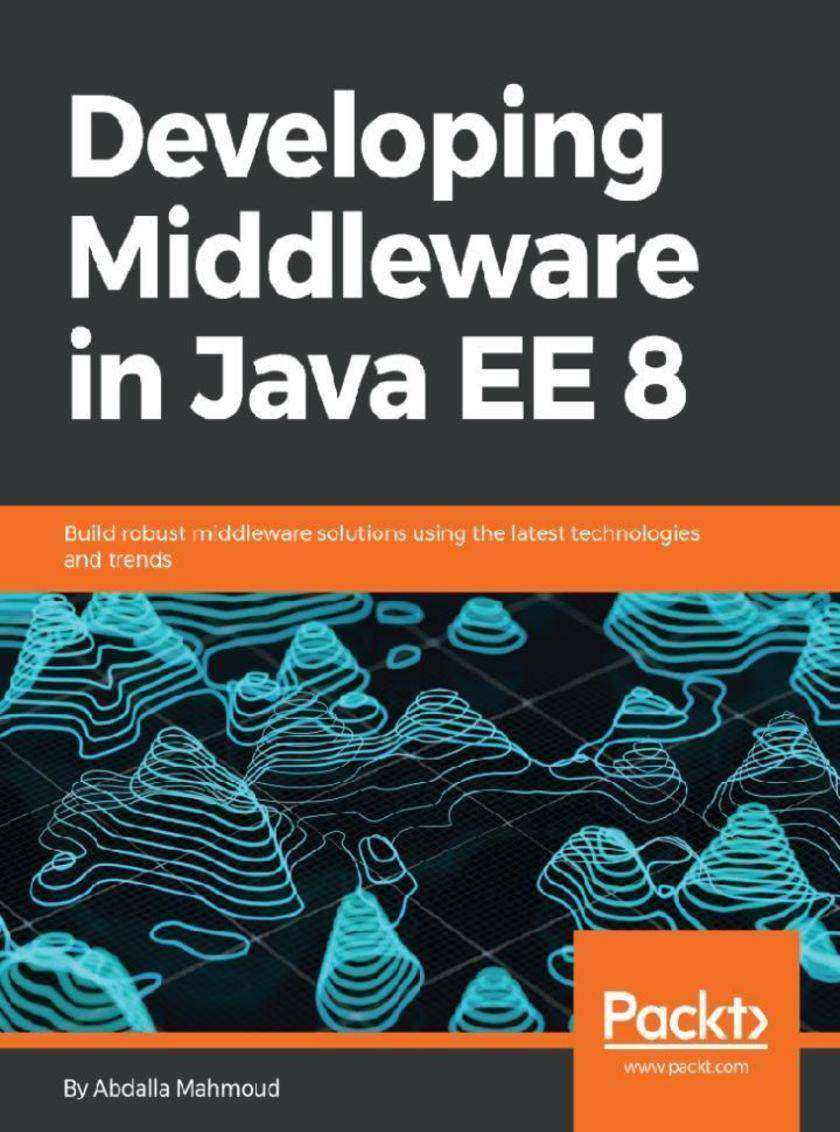
Developing Middleware in Java EE 8
¥81.74
Use Java features such as JAX-RS, EJBs, and JPAs to build powerful middleware for newer architectures such as the cloud About This Book ? Explore EJBs to build middleware solutions for enterprise and distributed applications ? Understand middleware designs such as event-based and message-driven web services ? Learn to design and maintain large-scale systems and vendor disputes Who This Book Is For Enterprise architects, designers, developers, and programmers who are interested in learning how to build robust middleware solutions for enterprise software will find this book useful. Prior knowledge of Java EE is essential What You Will Learn ? Implement the latest Java EE 8 APIs and manage dependencies with CDI 2.0 ? Perform CRUD operations and access databases with JPA 2.1 ? Use bean validation API 2.0 to validate data ? Develop business logic with EJB 3.2 ? Incorporate the REST architecture and RESTful API design patterns ? Perform serialization and deserialization on JSON documents using JSON-B ? Utilize JMS for messaging and queuing models and securing applications ? Test applications using JUnit and Mockito and deploy them using Docker In Detail Middleware is the infrastructure in software based applications that enables businesses to solve problems, operate more efficiently, and make money. As the use of middleware extends beyond a single application, the importance of having it written by experts increases substantially. This book will help you become an expert in developing middleware for a variety of applications. The book starts off by exploring the latest Java EE 8 APIs with newer features and managing dependencies with CDI 2.0. You will learn to implement object-to-relational mapping using JPA 2.1 and validate data using bean validation. You will also work with different types of EJB to develop business logic, and with design RESTful APIs by utilizing different HTTP methods and activating JAX-RS features in enterprise applications. You will learn to secure your middleware with Java Security 1.0 and implement various authentication techniques, such as OAuth authentication. In the concluding chapters, you will use various test technologies, such as JUnit and Mockito, to test applications, and Docker to deploy your enterprise applications. By the end of the book, you will be proficient in developing robust, effective, and distributed middleware for your business. Style and approach Learn how to design and implement professional enterprise middleware solutions using the latest techniques and features provided by the Java EE 8 platform.
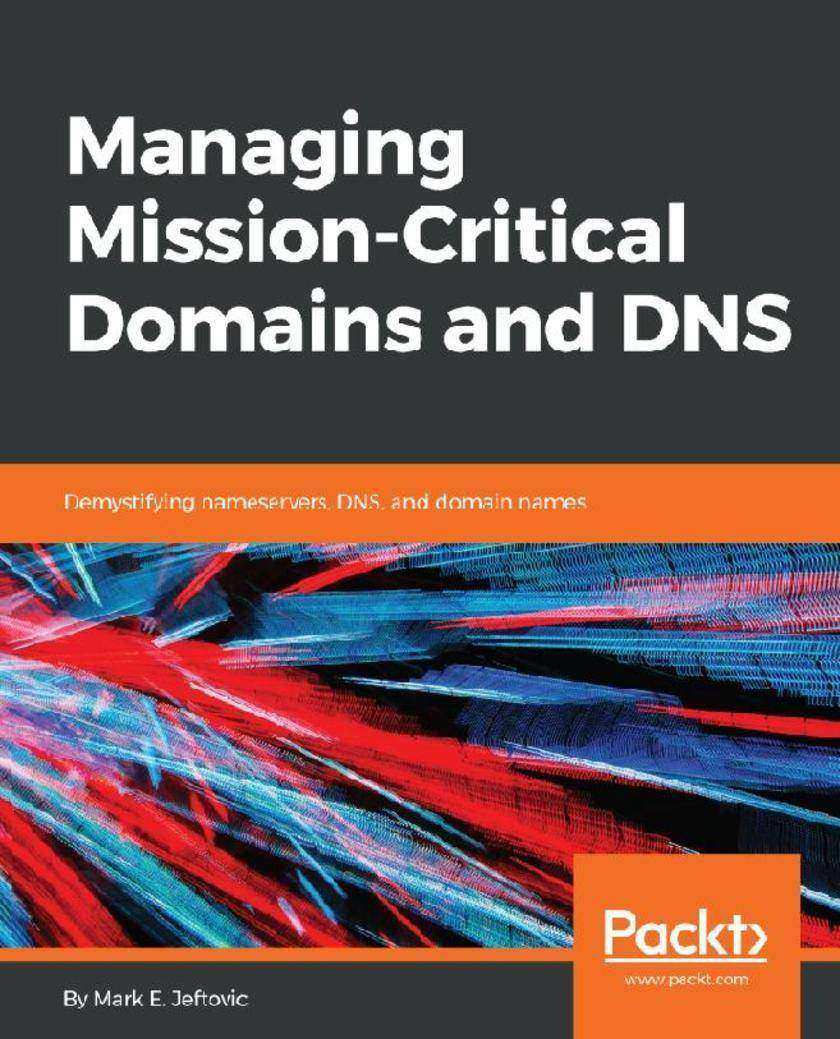
Managing Mission - Critical Domains and DNS
¥81.74
This book will give you an all encompassing view of the domain name ecosystem combined with a comprehensive set of operations strategies. About This Book ? Manage infrastructure, risk, and management of DNS name servers. Get hands-on with factors like types of name servers, DNS queries and and so on. ? Practical guide for system administrators to manage mission-critical servers ? Based on real-world experience - Written by an industry veteran who has made every possible mistake within this field. Who This Book Is For Ideal for sysadmins, webmasters, IT consultants, and developers-anyone responsible for maintaining your organization's core DNS What You Will Learn ? Anatomy of a domain - how a domain is the sum of both its DNS zone and its registration data, and why that matters. ? The domain name ecosystem - the role of registries, registrars and oversight bodies and their effect on your names. ? How DNS queries work - queries and responses are examined including debugging techniques to zero in on problems. ? Nameserver considerations - alternative nameserver daemons, numbering considerations, and deployment architectures. ? DNS use cases - the right way for basic operations such as domain transfers, large scale migrations, GeoDNS, Anycast DNS. ? Securing your domains - All aspects of security from registrar vendor selection, to DNSSEC and DDOS mitigation strategies. In Detail Managing your organization's naming architecture and mitigating risks within complex naming environments is very important. This book will go beyond looking at “how to run a name server” or “how to DNSSEC sign a domain”, Managing Mission Critical Domains & DNS looks across the entire spectrum of naming; from external factors that exert influence on your domains to all the internal factors to consider when operating your DNS. The readers are taken on a comprehensive guided tour through the world of naming: from understanding the role of registrars and how they interact with registries, to what exactly is it that ICANN does anyway? Once the prerequisite knowledge of the domain name ecosystem is acquired, the readers are taken through all aspects of DNS operations. Whether your organization operates its own nameservers or utilizes an outsourced vendor, or both, we examine the complex web of interlocking factors that must be taken into account but are too frequently overlooked. By the end of this book, our readers will have an end to end to understanding of all the aspects covered in DNS name servers. Style and approach The book is divided into two parts, the first part looks at the wider domain name ecosystem: registries, registrars and oversight policies. The second and larger part goes into operations. Every aspect of naming is considered from the viewpoint of how this affects ones domains, what are the ramifications of different operating methods as portfolios scale.
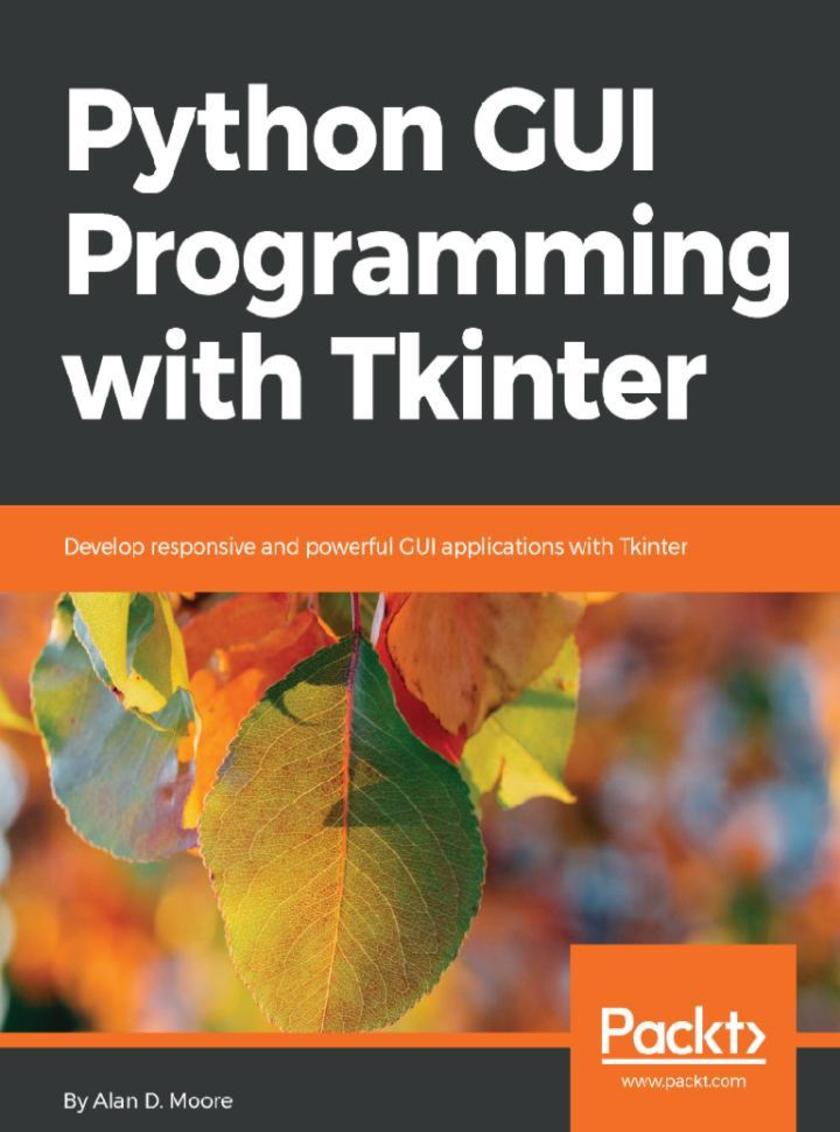
Python GUI Programming with Tkinter
¥81.74
Find out how to create visually stunning and feature-rich applications by empowering Python's built-in Tkinter GUI toolkit About This Book ? Explore Tkinter's powerful features to easily design and customize your GUI application ? Learn the basics of 2D and 3D animation in GUI applications. ? Learn to integrate stunning Data Visualizations using Tkinter Canvas and Matplotlib. Who This Book Is For This book will appeal to developers and programmers who would like to build GUI-based applications. Knowledge of Python is a prerequisite. What You Will Learn ? Implement the tools provided by Tkinter to design beautiful GUIs ? Discover cross-platform development through minor customizations in your existing application ? Visualize graphs in real time as data comes in using Tkinter's animation capabilities ? Use PostgreSQL authentication to ensure data security for your application ? Write unit tests to avoid regressions when updating code In Detail Tkinter is a lightweight, portable, and easy-to-use graphical toolkit available in the Python Standard Library, widely used to build Python GUIs due to its simplicity and availability. This book teaches you to design and build graphical user interfaces that are functional, appealing, and user-friendly using the powerful combination of Python and Tkinter. After being introduced to Tkinter, you will be guided step-by-step through the application development process. Over the course of the book, your application will evolve from a simple data-entry form to a complex data management and visualization tool while maintaining a clean and robust design. In addition to building the GUI, you'll learn how to connect to external databases and network resources, test your code to avoid errors, and maximize performance using asynchronous programming. You'll make the most of Tkinter's cross-platform availability by learning how to maintain compatibility, mimic platform-native look and feel, and build executables for deployment across popular computing platforms. By the end of this book, you will have the skills and confidence to design and build powerful high-end GUI applications to solve real-world problems. Style and approach This is a comprehensive guide that explores the essential Tkinter features and modules and implements them in building real-world cross-platform GUI applications
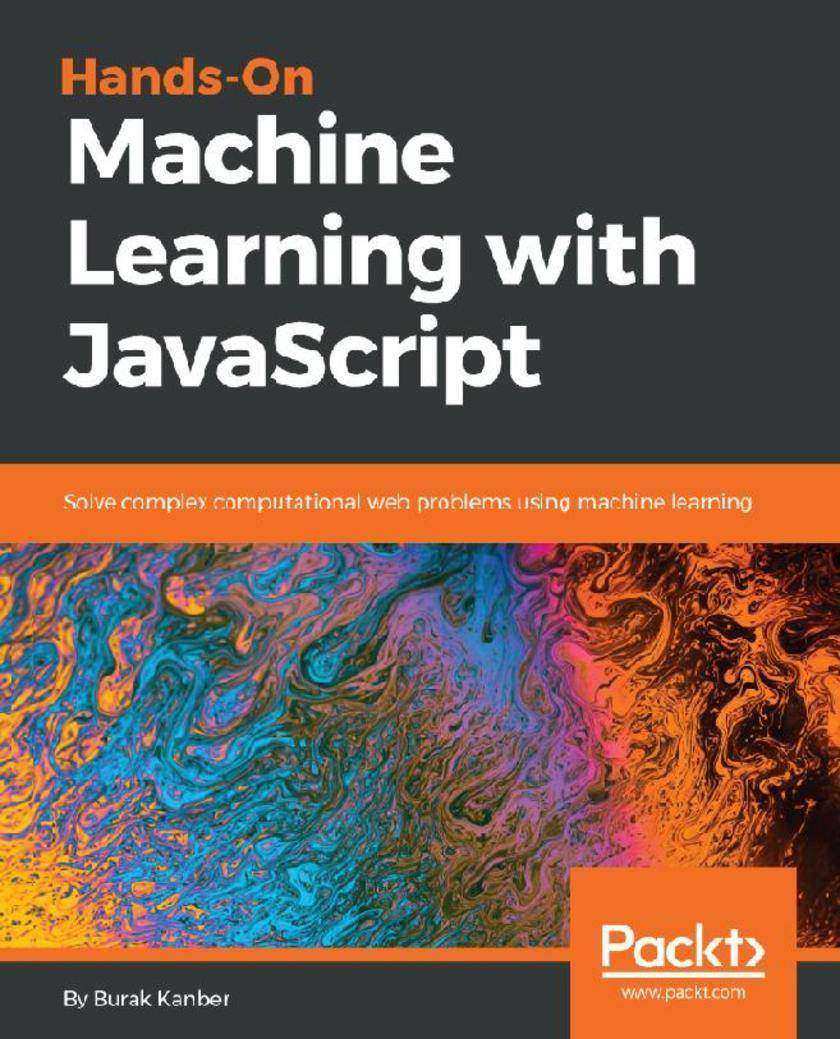
Hands-on Machine Learning with JavaScript
¥81.74
A definitive guide to creating an intelligent web application with the best of machine learning and JavaScript About This Book ? Solve complex computational problems in browser with JavaScript ? Teach your browser how to learn from rules using the power of machine learning ? Understand discoveries on web interface and API in machine learning Who This Book Is For This book is for you if you are a JavaScript developer who wants to implement machine learning to make applications smarter, gain insightful information from the data, and enter the field of machine learning without switching to another language. Working knowledge of JavaScript language is expected to get the most out of the book. What You Will Learn ? Get an overview of state-of-the-art machine learning ? Understand the pre-processing of data handling, cleaning, and preparation ? Learn Mining and Pattern Extraction with JavaScript ? Build your own model for classification, clustering, and prediction ? Identify the most appropriate model for each type of problem ? Apply machine learning techniques to real-world applications ? Learn how JavaScript can be a powerful language for machine learning In Detail In over 20 years of existence, JavaScript has been pushing beyond the boundaries of web evolution with proven existence on servers, embedded devices, Smart TVs, IoT, Smart Cars, and more. Today, with the added advantage of machine learning research and support for JS libraries, JavaScript makes your browsers smarter than ever with the ability to learn patterns and reproduce them to become a part of innovative products and applications. Hands-on Machine Learning with JavaScript presents various avenues of machine learning in a practical and objective way, and helps implement them using the JavaScript language. Predicting behaviors, analyzing feelings, grouping data, and building neural models are some of the skills you will build from this book. You will learn how to train your machine learning models and work with different kinds of data. During this journey, you will come across use cases such as face detection, spam filtering, recommendation systems, character recognition, and more. Moreover, you will learn how to work with deep neural networks and guide your applications to gain insights from data. By the end of this book, you'll have gained hands-on knowledge on evaluating and implementing the right model, along with choosing from different JS libraries, such as NaturalNode, brain, harthur, classifier, and many more to design smarter applications. Style and approach This is a practical tutorial that uses hands-on examples to step through some real-world applications of machine learning. Without shying away from the technical details, you will explore machine learning with JavaScript using clear and practical examples.
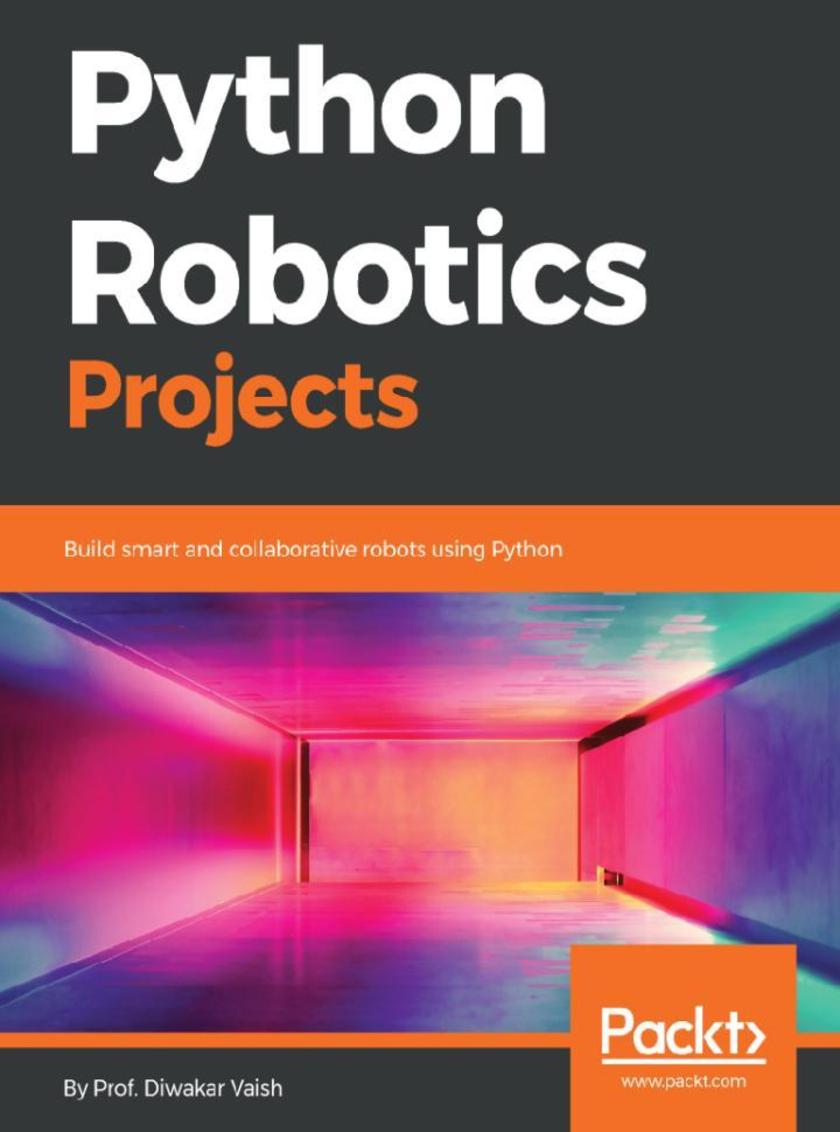
Python Robotics Projects
¥81.74
Leverage the power of Python to build DIY robotic projects About This Book ? Design, build, and stimulate collaborative robots ? Build high-end robotics projects such as a customized personal Jarvis ? Leverage the power of Python and ROS for DIY robotic projects Who This Book Is For If building robots is your dream, then this book is made for you. Prior knowledge of Python would be an added advantage. What You Will Learn ? Get to know the basics of robotics and its functions ? Walk through interface components with microcontrollers ? Integrate robotics with the IoT environment ? Build projects using machine learning ? Implement path planning and vision processing ? Interface your robots with Bluetooth In Detail Robotics is a fast-growing industry. Multiple surveys state that investment in the field has increased tenfold in the last 6 years, and is set to become a $100-billion sector by 2020. Robots are prevalent throughout all industries, and they are all set to be a part of our domestic lives. This book starts with the installation and basic steps in configuring a robotic controller. You'll then move on to setting up your environment to use Python with the robotic controller. You'll dive deep into building simple robotic projects, such as a pet-feeding robot, and more complicated projects, such as machine learning enabled home automation system (Jarvis), vision processing based robots and a self-driven robotic vehicle using Python. By the end of this book, you'll know how to build smart robots using Python. Style and approach A simple step-by-step guide to help you learn the concepts of robotics using simple to advanced steps. You’ll not only learn the concepts of AI, machine learning, and Vision Processing, but also how to practically implement them in your projects.
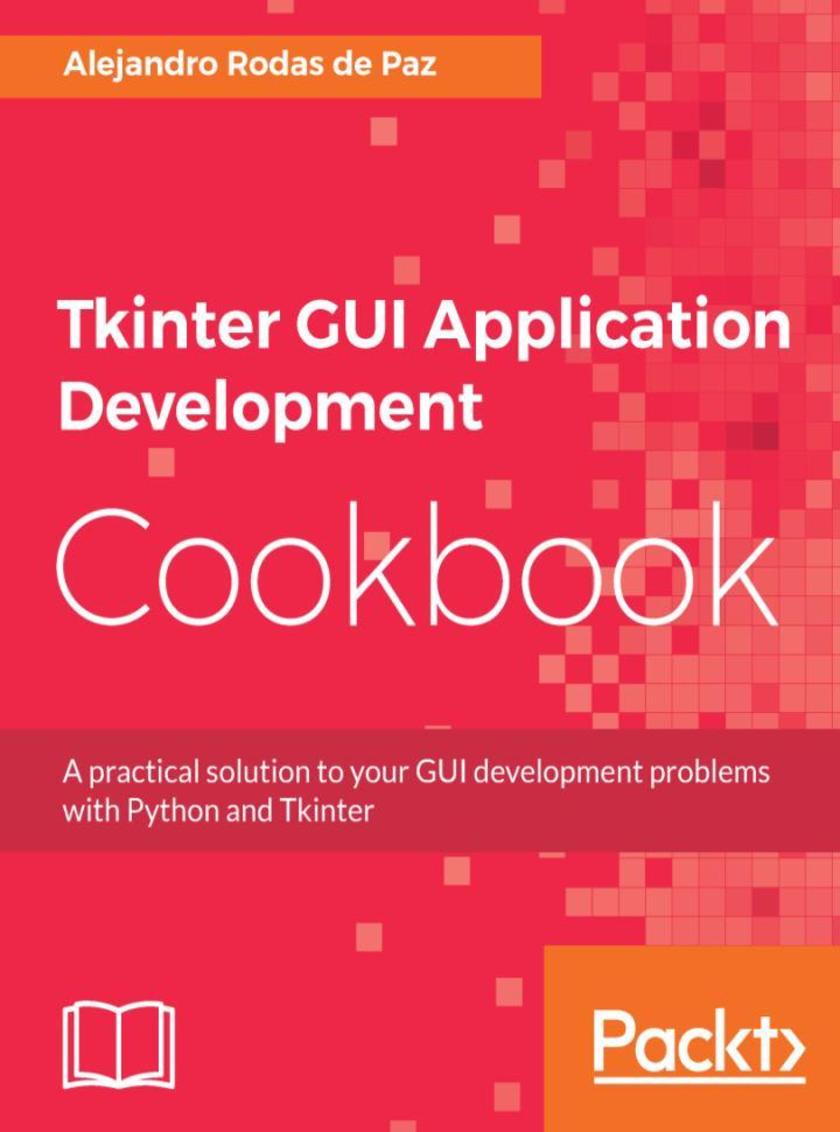
Tkinter GUI Application Development Cookbook
¥73.02
Discover solutions to all your Tkinter and Python GUI development problems About This Book ? Integrate efficient Python GUI programming techniques with Tkinter ? Efficiently implement advanced MVC architectures in your Python GUI apps ? Solve all your problems related to Tkinter and Python GUI development Who This Book Is For This book is for Python developers who are familiar with the basics of the language syntax, data structures, and OOP. You do not need previous experience with Tkinter or other GUI development libraries. What You Will Learn ? Add widgets and handle user events ? Lay out widgets within windows using frames and the different geometry managers ? Configure widgets so that they have a customized appearance and behavior ? Improve the navigation of your apps with menus and dialogs ? Apply object-oriented programming techniques in Tkinter applications ? Use threads to achieve responsiveness and update the GUI ? Explore the capabilities of the canvas widget and the types of items that can be added to it ? Extend Tkinter applications with the TTK (themed Tkinter) module In Detail As one of the more versatile programming languages, Python is well-known for its batteries-included philosophy, which includes a rich set of modules in its standard library; Tkinter is the library included for building desktop applications. Due to this, Tkinter is a common choice for rapid GUI development, and more complex applications can benefit from the full capabilities of this library. This book covers all of your Tkinter and Python GUI development problems and solutions. Tkinter GUI Application Development Cookbook starts with an overview of Tkinter classes and at the same time provides recipes for basic topics, such as layout patterns and event handling. Next, we cover how to develop common GUI patterns, such as entering and saving data, navigating through menus and dialogs, and performing long-running actions in the background. You will then make your apps leverage network resources effectively, perform 2D and 3D animation-related tasks, create 3D objects, and perform advanced graphical operations. Finally, this book covers using the canvas and themed widgets. By the end of the book, you will have an in-depth knowledge of Tkinter classes, and will know how to use them to build efficient and rich GUI applications. Style and approach A practical recipe-based guide that will help you find solutions to all your Tkinter and Python GUI development-related problems.
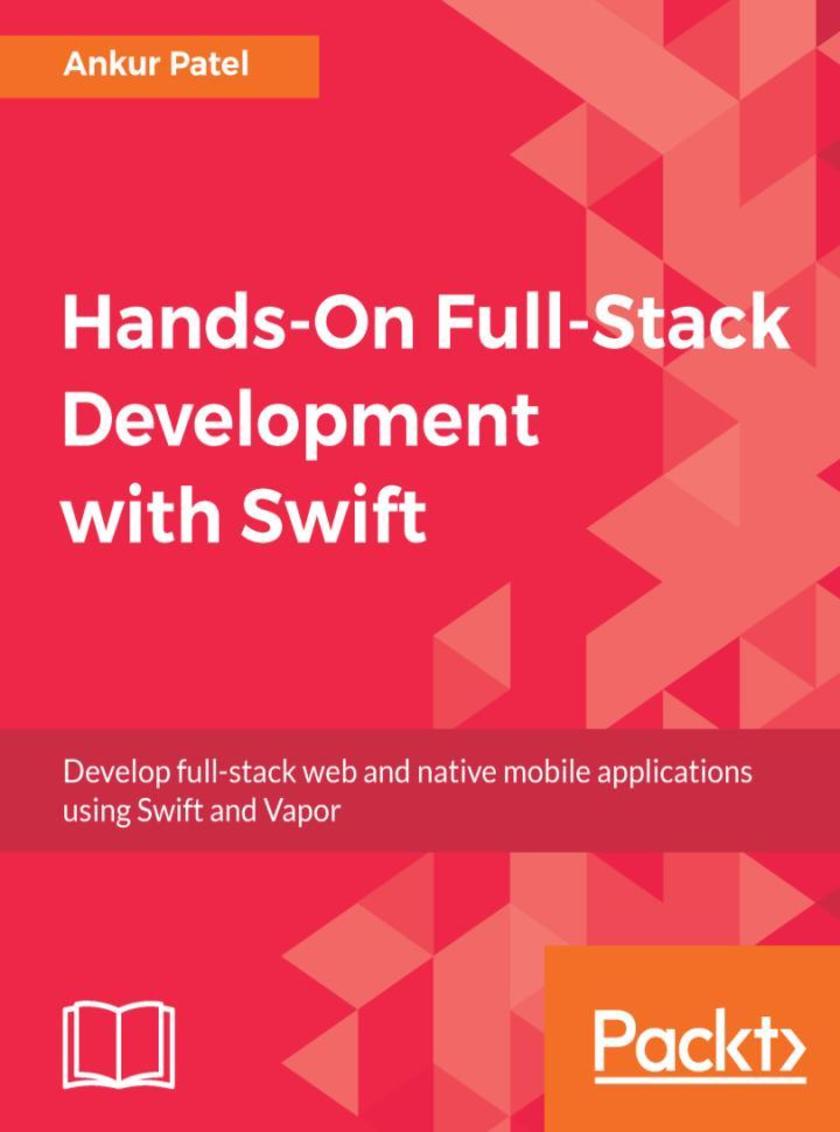
Hands-On Full-Stack Development with Swift
¥81.74
Build full-stack shopping list applications from scratch for web and mobile platforms using Xcode, Vapor, and Swift About This Book ? Build, package, and deploy an end-to-end app solution for mobile and web with Swift 4 ? Increase developer productivity by creating reusable client and server components ? Develop backend services for your apps and websites using Vapor framework Who This Book Is For This book is for developers who are looking to build full-stack web and native mobile applications using Swift. An understanding of HTML, CSS, and JavaScript would be beneficial when building server-rendered pages with Vapor. What You Will Learn ? Get accustomed to server-side programming as well as the Vapor framework ? Learn how to build a RESTful API ? Make network requests from your app and handle error states when a network request fails ? Deploy your app to Heroku using the CLI command ? Write a test for the Vapor backend ? Create a tvOS version of your shopping list app and explore code-sharing with an iOS platform ? Add registration and authentication so that users can have their own shopping lists In Detail Making Swift an open-source language enabled it to share code between a native app and a server. Building a scalable and secure server backend opens up new possibilities, such as building an entire application written in one language—Swift. This book gives you a detailed walk-through of tasks such as developing a native shopping list app with Swift and creating a full-stack backend using Vapor (which serves as an API server for the mobile app). You'll also discover how to build a web server to support dynamic web pages in browsers, thereby creating a rich application experience. You’ll begin by planning and then building a native iOS app using Swift. Then, you'll get to grips with building web pages and creating web views of your native app using Vapor. To put things into perspective, you'll learn how to build an entire full-stack web application and an API server for your native mobile app, followed by learning how to deploy the app to the cloud, and add registration and authentication to it. Once you get acquainted with creating applications, you'll build a tvOS version of the shopping list app and explore how easy is it to create an app for a different platform with maximum code shareability. Towards the end, you’ll also learn how to create an entire app for different platforms in Swift, thus enhancing your productivity. Style and approach A step-by-step tutorial-based approach that teaches you full-stack Swift through the development of a single application on several platforms.
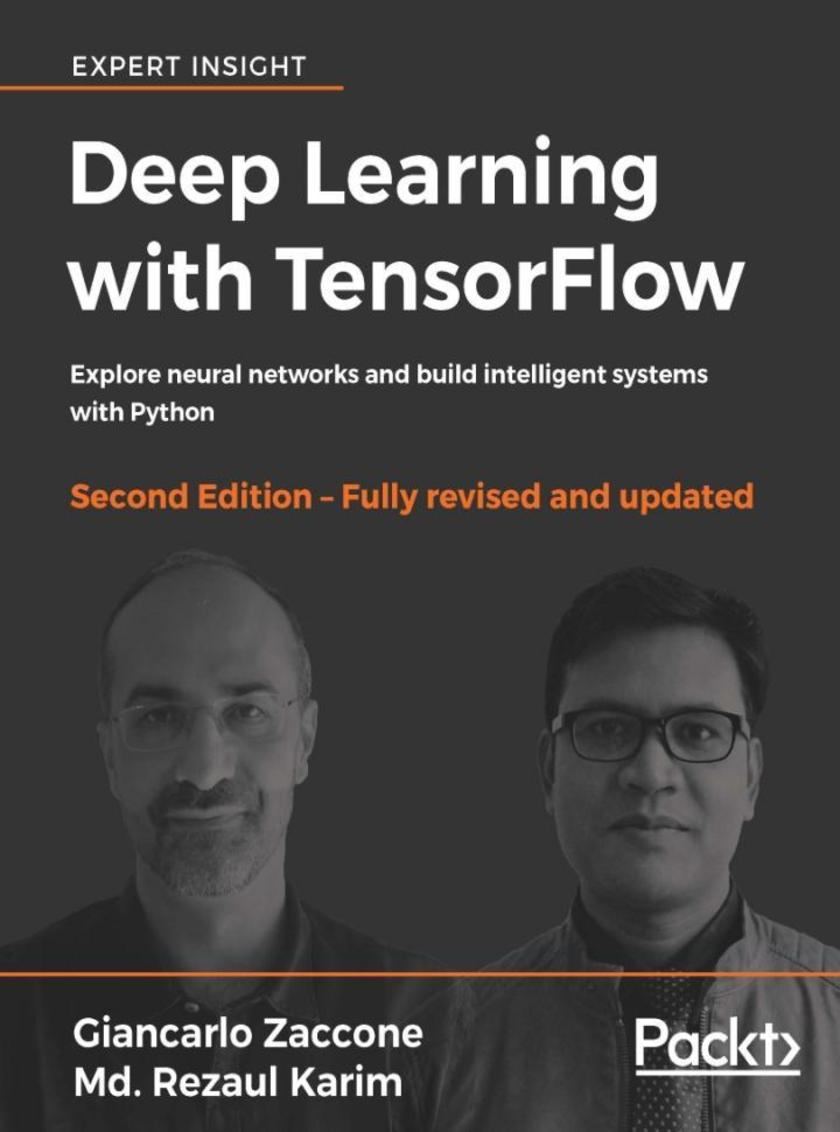
Deep Learning with TensorFlow - Second Edition
¥73.02
Delve into neural networks, implement deep learning algorithms, and explore layers of data abstraction with the help of TensorFlow v1.7. About This Book ? Learn how to implement advanced techniques in deep learning with Google's brainchild, TensorFlow v1.7 ? Explore deep neural networks and layers of data abstraction with the help of this comprehensive guide ? Gain real-world contextualization through some deep learning problems concerning research and application Who This Book Is For The book is for people interested in machine learning and machine intelligence. A rudimentary level of programming in one language is assumed, as is a basic familiarity with computer science techniques and technologies, including a basic awareness of computer hardware and algorithms. Some competence in mathematics is needed to the level of elementary linear algebra and calculus. What You Will Learn ? Apply deep machine intelligence and GPU computing with TensorFlow v1.7 ? Access public datasets and use TensorFlow to load, process, and transform the data ? Discover how to use the high-level TensorFlow API to build more powerful applications ? Use deep learning for scalable object detection and mobile computing ? Train machines quickly to learn from data by exploring reinforcement learning techniques ? Explore active areas of deep learning research and applications In Detail Deep learning is a branch of machine learning algorithms based on learning multiple levels of abstraction. Neural networks, which are at the core of deep learning, are being used in predictive analytics, computer vision, natural language processing, time series forecasting, and to perform a myriad of other complex tasks. This book is conceived for developers, data analysts, machine learning practitioners and deep learning enthusiasts who want to build powerful, robust, and accurate predictive models with the power of TensorFlow v1.7, combined with other open source Python libraries. Throughout the book, you’ll learn how to develop deep learning applications for machine learning systems using Feedforward Neural Networks, Convolutional Neural Networks, Recurrent Neural Networks, Autoencoders, and Factorization Machines. Discover how to attain deep learning programming on GPU in a distributed way. You'll come away with an in-depth knowledge of machine learning techniques and the skills to apply them to real-world projects. Style and approach This step-by-step guide explores common, and not so common, deep neural networks, and shows how they can be exploited in the real world with complex raw data. Benefit from practical examples, and learn how to implement different types of neural nets to build smart applications related to text, speech, and image data processing.
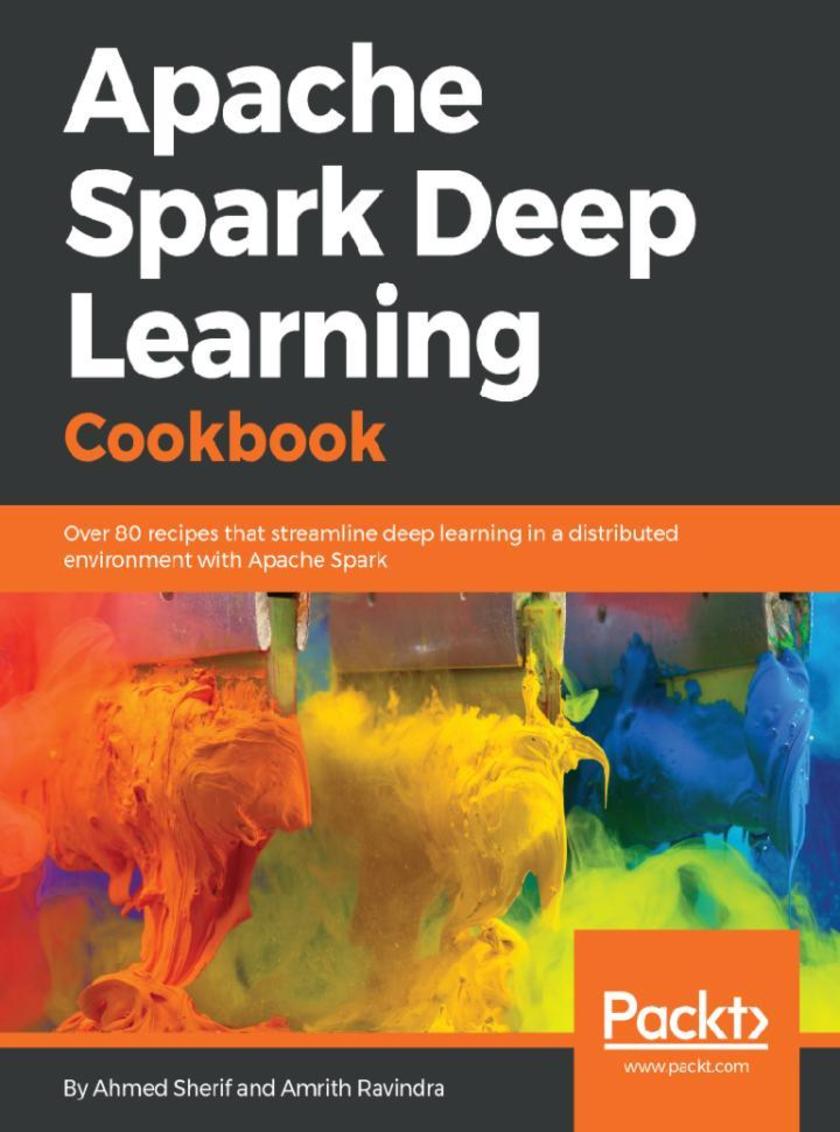
Apache Spark Deep Learning Cookbook
¥82.83
A solution-based guide to put your deep learning models into production with the power of Apache Spark Key Features * Discover practical recipes for distributed deep learning with Apache Spark * Learn to use libraries such as Keras and TensorFlow * Solve problems in order to train your deep learning models on Apache Spark Book Description With deep learning gaining rapid mainstream adoption in modern-day industries, organizations are looking for ways to unite popular big data tools with highly efficient deep learning libraries. As a result, this will help deep learning models train with higher efficiency and speed. With the help of the Apache Spark Deep Learning Cookbook, you’ll work through specific recipes to generate outcomes for deep learning algorithms, without getting bogged down in theory. From setting up Apache Spark for deep learning to implementing types of neural net, this book tackles both common and not so common problems to perform deep learning on a distributed environment. In addition to this, you’ll get access to deep learning code within Spark that can be reused to answer similar problems or tweaked to answer slightly different problems. You will also learn how to stream and cluster your data with Spark. Once you have got to grips with the basics, you’ll explore how to implement and deploy deep learning models, such as Convolutional Neural Networks (CNN) and Recurrent Neural Networks (RNN) in Spark, using popular libraries such as TensorFlow and Keras. By the end of the book, you'll have the expertise to train and deploy efficient deep learning models on Apache Spark. What you will learn * Set up a fully functional Spark environment * Understand practical machine learning and deep learning concepts * Apply built-in machine learning libraries within Spark * Explore libraries that are compatible with TensorFlow and Keras * Explore NLP models such as Word2vec and TF-IDF on Spark * Organize dataframes for deep learning evaluation * Apply testing and training modeling to ensure accuracy * Access readily available code that may be reusable Who this book is for If you’re looking for a practical and highly useful resource for implementing efficiently distributed deep learning models with Apache Spark, then the Apache Spark Deep Learning Cookbook is for you. Knowledge of the core machine learning concepts and a basic understanding of the Apache Spark framework is required to get the best out of this book. Additionally, some programming knowledge in Python is a plus.
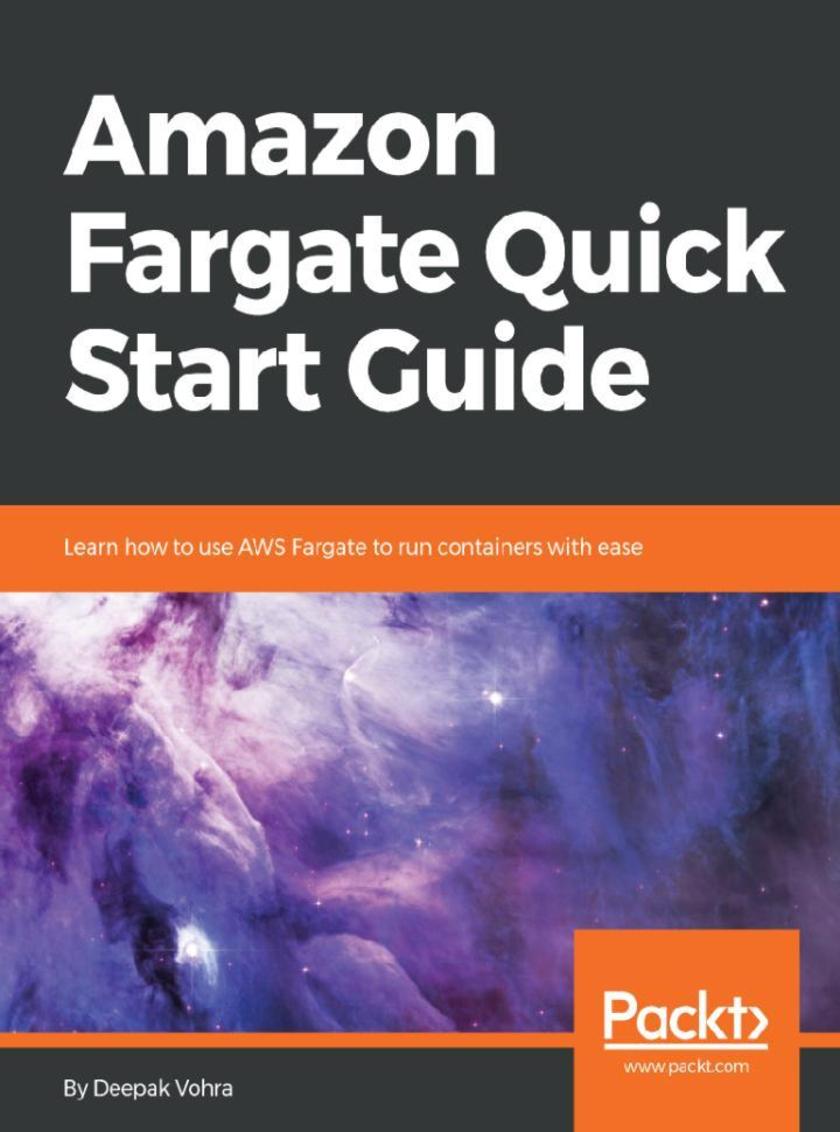
Amazon Fargate Quick Start Guide
¥52.31
This book gets you started and gives you knowledge about AWS Fargate in order to successfully incorporate it in your ECS container application. Key Features *Gives you a quick walk-through over the Amazon Elastic Container Services (ECS) *Provides an in depth knowledge of the components that Amazon Fargate has to offer. *Learn the practical aspects of Docker application development with a managed service Book Description Amazon Fargate is new launch type for the Amazon Elastic Container Service (ECS). ECS is an AWS service for Docker container orchestration. Docker is the de facto containerization framework and has revolutionized packaging and deployment of software. The introduction of Fargate has made the ECS platform serverless. The book takes you through how Amazon Fargate runs ECS services composed of tasks and Docker containers and exposes the containers to the user. Fargate has simplified the ECS platform. We will learn how Fargate creates an Elastic Network Interface (ENI) for each task and how auto scaling can be enabled for ECS tasks. You will also learn about using an IAM policy to download Docker images and send logs to CloudWatch. Finally, by the end of this book, you will have learned about how to use ECS CLI to create an ECS cluster and deploy tasks with Docker Compose. What you will learn *Running Docker containers with a managed service *Use Amazon ECS in Fargate launch mode *Configure CloudWatch Logging with Fargate *Use an IAM Role with Fargate *Understand how ECS CLI is used with Fargate *Learn how to use an Application Load Balancer with Fargate *Learn about Auto Scaling with Fargate Who this book is for This book is for Docker users and developers who want to learn about the Fargate platform. Typical job roles for which the book is suitable are DevOps Architect, Docker Engineer, and AWS Cloud Engineer. Prior knowledge of AWS and ECS is helpful but not mandatory.
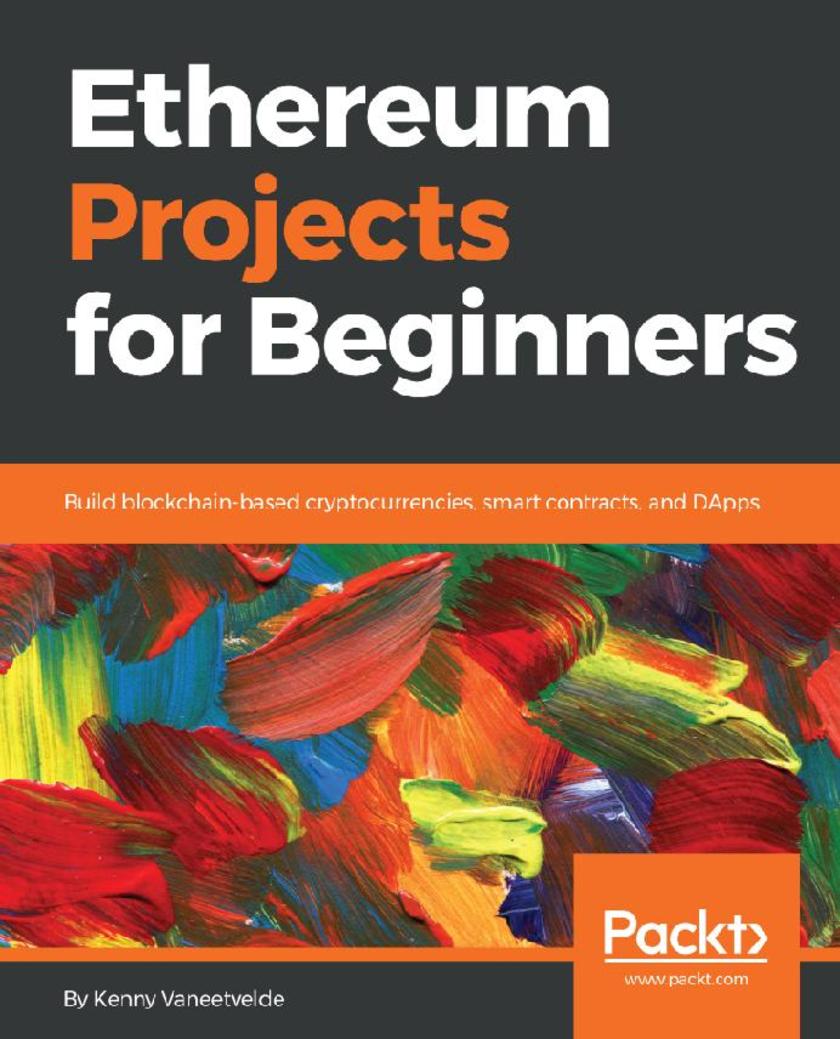
Ethereum Projects for Beginners
¥42.50
Understand the Ethereum platform to build distributed applications that are secured and decentralized using blockchain technology Key Features *Build your own decentralized applications using real-world blockchain examples *Implement Ethereum for building smart contracts and cryptocurrency applications with easy-to-follow projects *Enhance your application security with blockchain Book Description Ethereum enables the development of efficient, smart contracts that contain code. These smart contracts can interact with other smart contracts to make decisions, store data, and send Ether to others.Ethereum Projects for Beginners provides you with a clear introduction to creating cryptocurrencies, smart contracts, and decentralized applications. As you make your way through the book, you’ll get to grips with detailed step-by-step processes to build advanced Ethereum projects. Each project will teach you enough about Ethereum to be productive right away. You will learn how tokenization works, think in a decentralized way, and build blockchain-based distributed computing systems. Towards the end of the book, you will develop interesting Ethereum projects such as creating wallets and secure data sharing.By the end of this book, you will be able to tackle blockchain challenges by implementing end-to-end projects using the full power of the Ethereum blockchain. What you will learn *Develop your ideas fast and efficiently using the Ethereum blockchain *Make writing and deploying smart contracts easy and manageable *Work with private data in blockchain applications *Handle large files in blockchain applications *Ensure your decentralized applications are safe *Explore how Ethereum development frameworks work *Create your own cryptocurrency or token on the Ethereum blockchain *Make sure your cryptocurrency is ERC20-compliant to launch an ICO Who this book is for This book is for individuals who want to build decentralized applications using blockchain technology and the power of Ethereum from scratch. Some prior knowledge of JavaScript is required, since most examples use a web frontend.
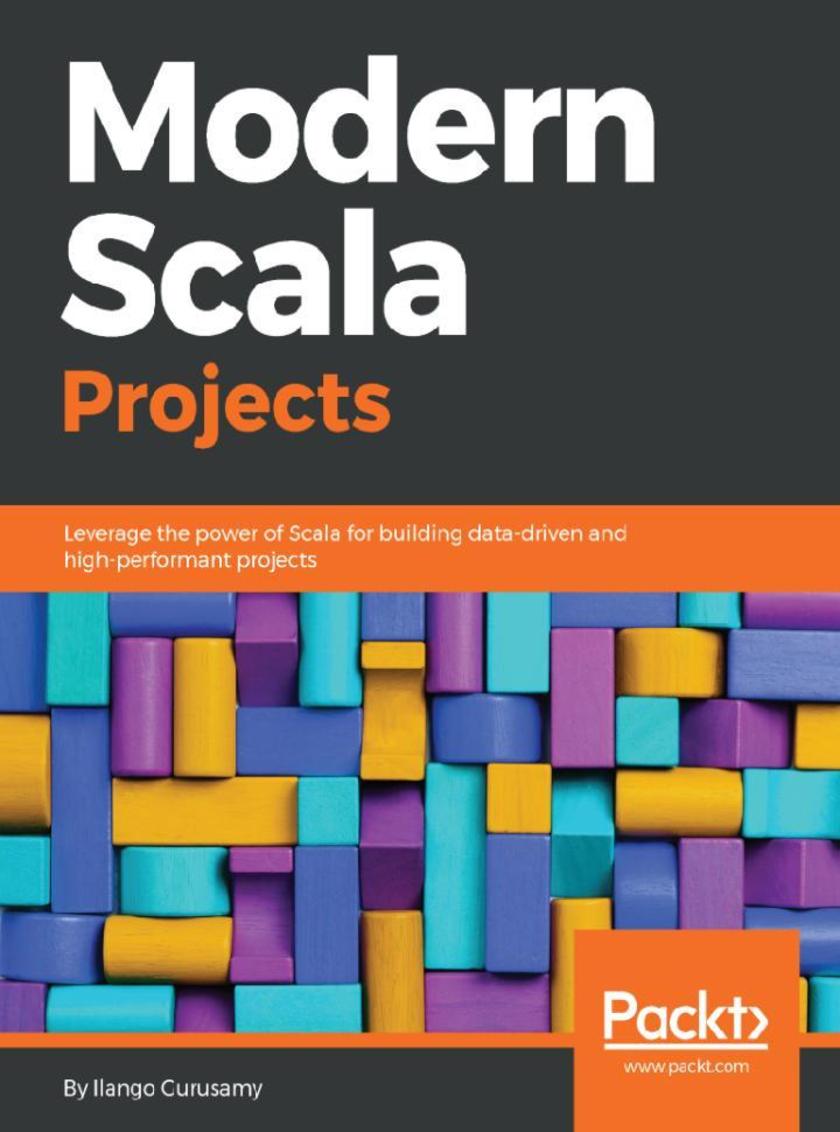
Modern Scala Projects
¥87.19
Use an open source firewall and features such as failover, load balancer, OpenVPN, IPSec, and Squid to protect your network Key Features *Explore pfSense, a trusted open source network security solution *Configure pfSense as a firewall and create and manage firewall rules *Test pfSense for failover and load balancing across multiple WAN connections Book Description While connected to the internet, you’re a potential target for an array of cyber threats, such as hackers, keyloggers, and Trojans that attack through unpatched security holes. A firewall works as a barrier (or ‘shield’) between your computer and cyberspace. pfSense is highly versatile firewall software. With thousands of enterprises using pfSense, it is fast becoming the world's most trusted open source network security solution. Network Security with pfSense begins with an introduction to pfSense, where you will gain an understanding of what pfSense is, its key features, and advantages. Next, you will learn how to configure pfSense as a firewall and create and manage firewall rules. As you make your way through the chapters, you will test pfSense for failover and load balancing across multiple wide area network (WAN) connections. You will then configure pfSense with OpenVPN for secure remote connectivity and implement IPsec VPN tunnels with pfSense. In the concluding chapters, you’ll understand how to configure and integrate pfSense as a Squid proxy server. By the end of this book, you will be able to leverage the power of pfSense to build a secure network. What you will learn *Understand what pfSense is, its key features, and advantages *Configure pfSense as a firewall *Set up pfSense for failover and load balancing *Connect clients through an OpenVPN client *Configure an IPsec VPN tunnel with pfSense *Integrate the Squid proxy into pfSense Who this book is for Network Security with pfSense is for IT administrators, security administrators, technical architects, chief experience officers, and individuals who own a home or small office network and want to secure it.
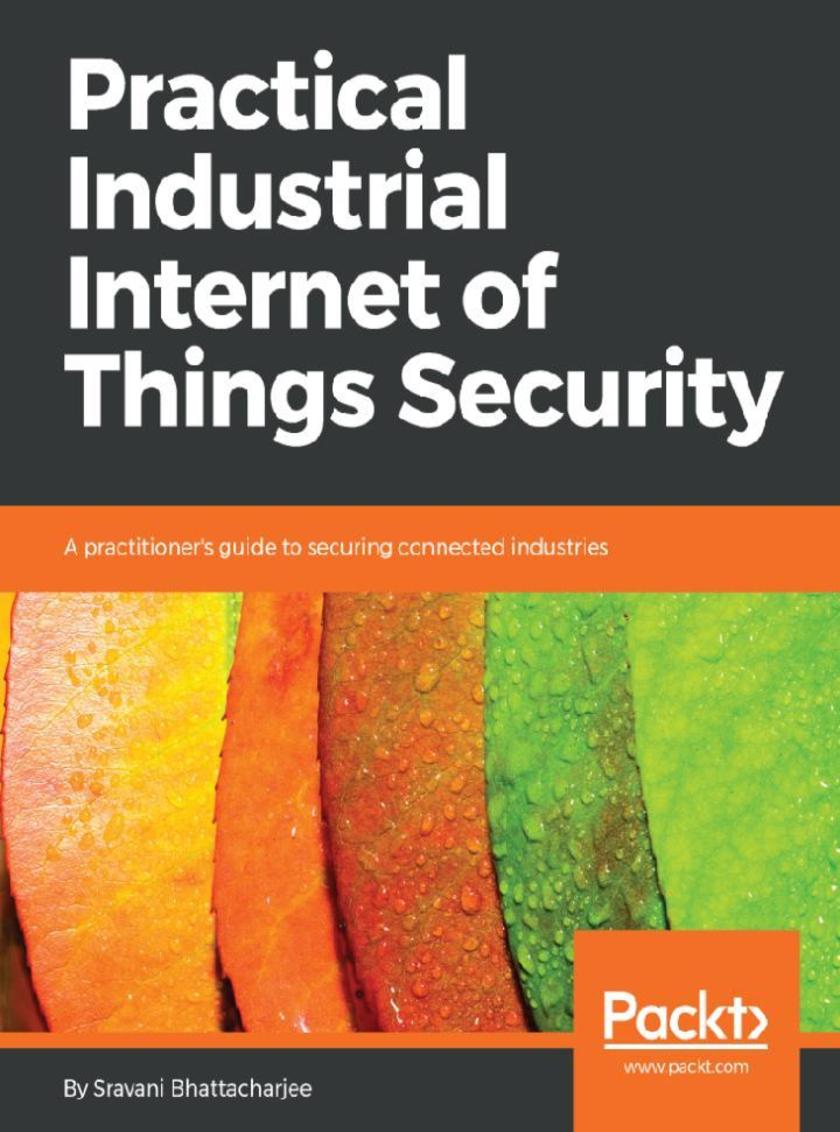
Practical Industrial Internet of Things Security
¥69.75
Over 60 recipes to help you design interactive, smart, and cross-platform GUI applications Key Features * Get succinct QT solutions to pressing GUI programming problems in Python * Learn how to effectively implement reactive programming * Build customized applications that are robust and reliable Book Description PyQt is one of the best cross-platform interface toolkits currently available; it's stable, mature, and completely native. If you want control over all aspects of UI elements, PyQt is what you need. This book will guide you through every concept necessary to create fully functional GUI applications using PyQt, with only a few lines of code. As you expand your GUI using more widgets, you will cover networks, databases, and graphical libraries that greatly enhance its functionality. Next, the book guides you in using Qt Designer to design user interfaces and implementing and testing dialogs, events, the clipboard, and drag and drop functionality to customize your GUI. You will learn a variety of topics, such as look and feel customization, GUI animation, graphics rendering, implementing Google Maps, and more. Lastly, the book takes you through how Qt5 can help you to create cross-platform apps that are compatible with Android and iOS. You will be able to develop functional and appealing software using PyQt through interesting and fun recipes that will expand your knowledge of GUIs What you will learn * Use basic Qt components, such as a radio button, combo box, and sliders * Use QSpinBox and sliders to handle different signals generated on mouse clicks * Work with different Qt layouts to meet user interface requirements * Create custom widgets and set up customizations in your GUI * Perform asynchronous I/O operations and thread handling in the Python GUI * Employ network concepts, internet browsing, and Google Maps in UI * Use graphics rendering and implement animation in your GUI * Make your GUI application compatible with Android and iOS devices Who this book is for If you’re an intermediate Python programmer wishing to enhance your coding skills by writing powerful GUIs in Python using PyQT, this is the book for you.
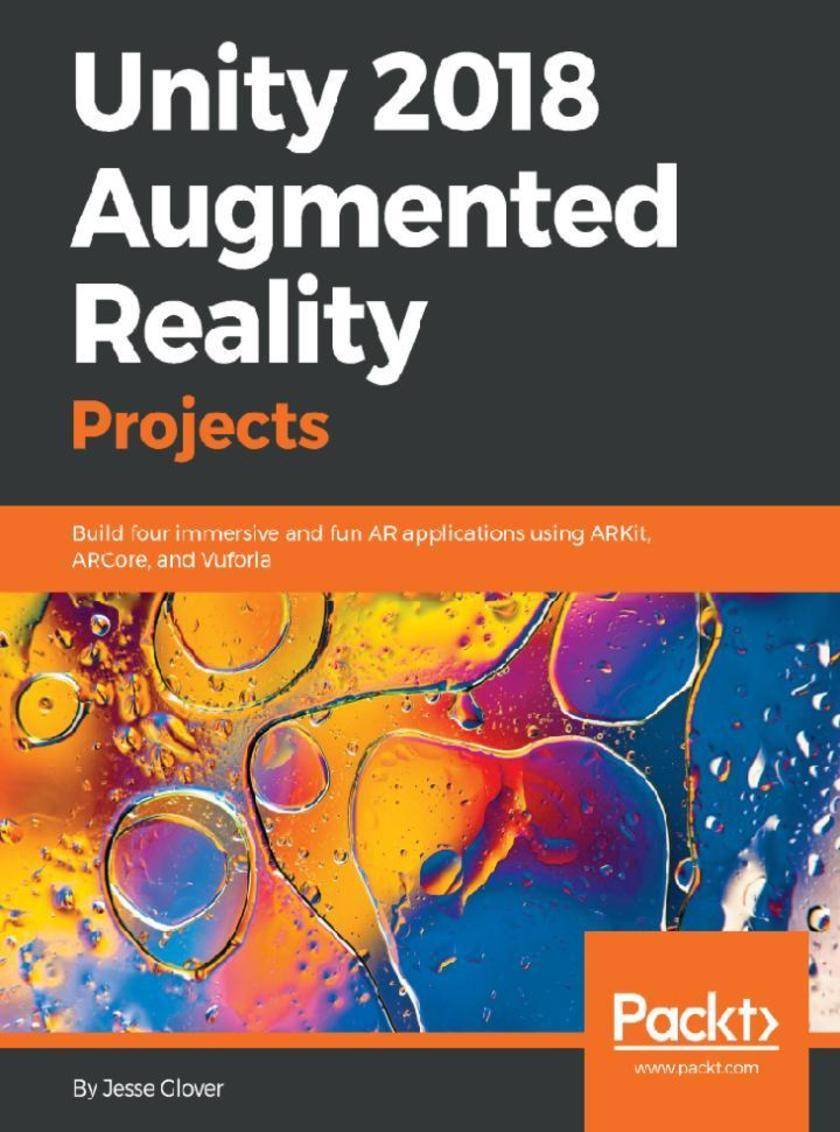
Unity 2018 Augmented Reality Projects
¥78.47
Learn the fundamentals of Java EE 8 APIs to build effective web services Key Features *Design modern and stylish web services with Java EE APIs *Secure your web services with JSON Web Tokens *Explore the advanced concepts of RESTful web services and the JAX-RS API Book Description Java Enterprise Edition is one of the leading application programming platforms for enterprise Java development. With Java EE 8 finally released and the first application servers now available, it is time to take a closer look at how to develop modern and lightweight web services with the latest API additions and improvements. Building RESTful Web Services with Java EE 8 is a comprehensive guide that will show you how to develop state-of-the-art RESTful web services with the latest Java EE 8 APIs. You will begin with an overview of Java EE 8 and the latest API additions and improvements. You will then delve into the details of implementing synchronous RESTful web services and clients with JAX-RS. Next up, you will learn about the specifics of data binding and content marshalling using the JSON-B 1.0 and JSON-P 1.1 APIs. This book also guides you in leveraging the power of asynchronous APIs on the server and client side, and you will learn to use server-sent events (SSEs) for push communication. The final section covers advanced web service topics such as validation, JWT security, and diagnosability. By the end of this book, you will have implemented several working web services and have a thorough understanding of the Java EE 8 APIs required for lightweight web service development. What you will learn *Dive into the latest Java EE 8 APIs relevant for developing web services *Use the new JSON-B APIs for easy data binding *Understand how JSON-P API can be used for flexible processing *Implement synchronous and asynchronous JAX-RS clients *Use server-sent events to implement server-side code *Secure Java EE 8 web services with JSON Web Tokens Who this book is for If you're a Java developer who wants to learn how to implement web services using the latest Java EE 8 APIs, this book is for you. Though no prior knowledge of Java EE 8 is required, experience with a previous Java EE version will be beneficial.
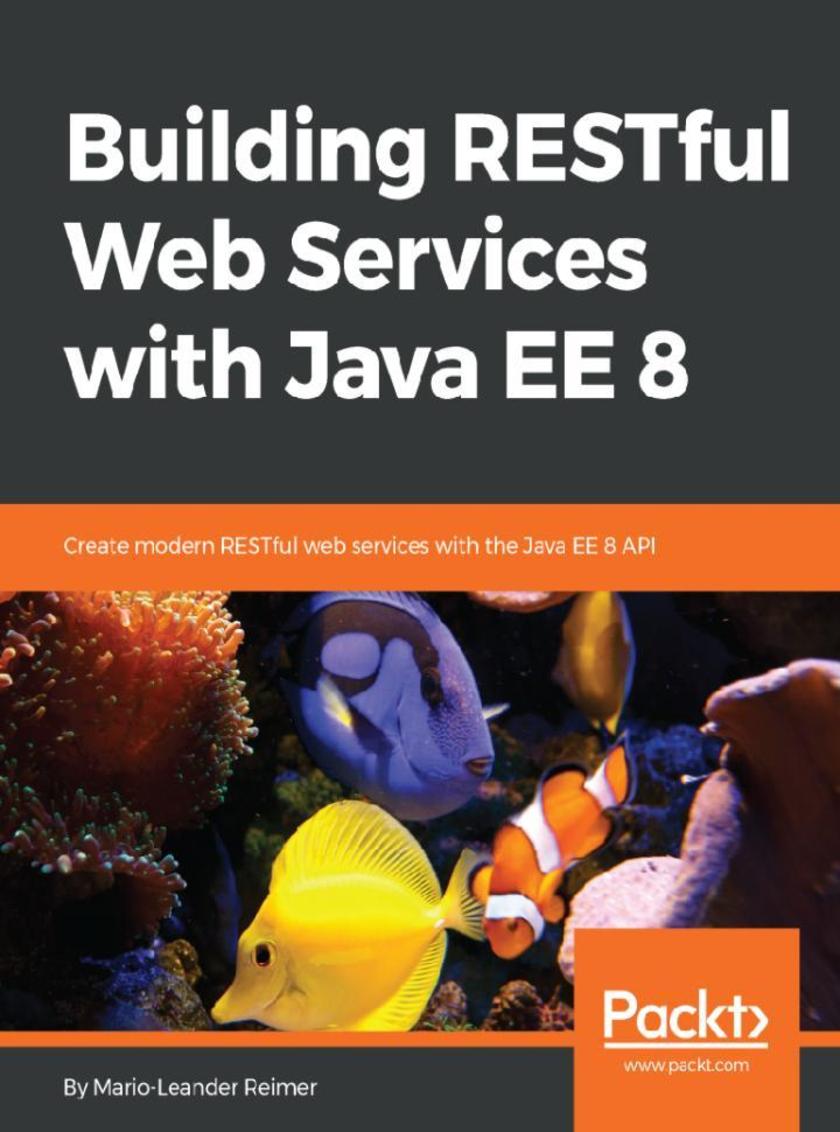
Building RESTful Web Services with Java EE 8
¥52.31
Architect and design data-intensive applications and, in the process, learn how to collect, process, store, govern, and expose data for a variety of use cases Key Features *Integrate the data-intensive approach into your application architecture *Create a robust application layout with effective messaging and data querying architecture *Enable smooth data flow and make the data of your application intensive and fast Book Description Are you an architect or a developer who looks at your own applications gingerly while browsing through Facebook and applauding it silently for its data-intensive, yet ?uent and efficient, behaviour? This book is your gateway to build smart data-intensive systems by incorporating the core data-intensive architectural principles, patterns, and techniques directly into your application architecture. This book starts by taking you through the primary design challenges involved with architecting data-intensive applications. You will learn how to implement data curation and data dissemination, depending on the volume of your data. You will then implement your application architecture one step at a time. You will get to grips with implementing the correct message delivery protocols and creating a data layer that doesn’t fail when running high traffic. This book will show you how you can divide your application into layers, each of which adheres to the single responsibility principle. By the end of this book, you will learn to streamline your thoughts and make the right choice in terms of technologies and architectural principles based on the problem at hand. What you will learn *Understand how to envision a data-intensive system *Identify and compare the non-functional requirements of a data collection component *Understand patterns involving data processing, as well as technologies that help to speed up the development of data processing systems *Understand how to implement Data Governance policies at design time using various Open Source Tools *Recognize the anti-patterns to avoid while designing a data store for applications *Understand the different data dissemination technologies available to query the data in an efficient manner *Implement a simple data governance policy that can be extended using Apache Falcon Who this book is for This book is for developers and data architects who have to code, test, deploy, and/or maintain large-scale, high data volume applications. It is also useful for system architects who need to understand various non-functional aspects revolving around Data Intensive Systems.
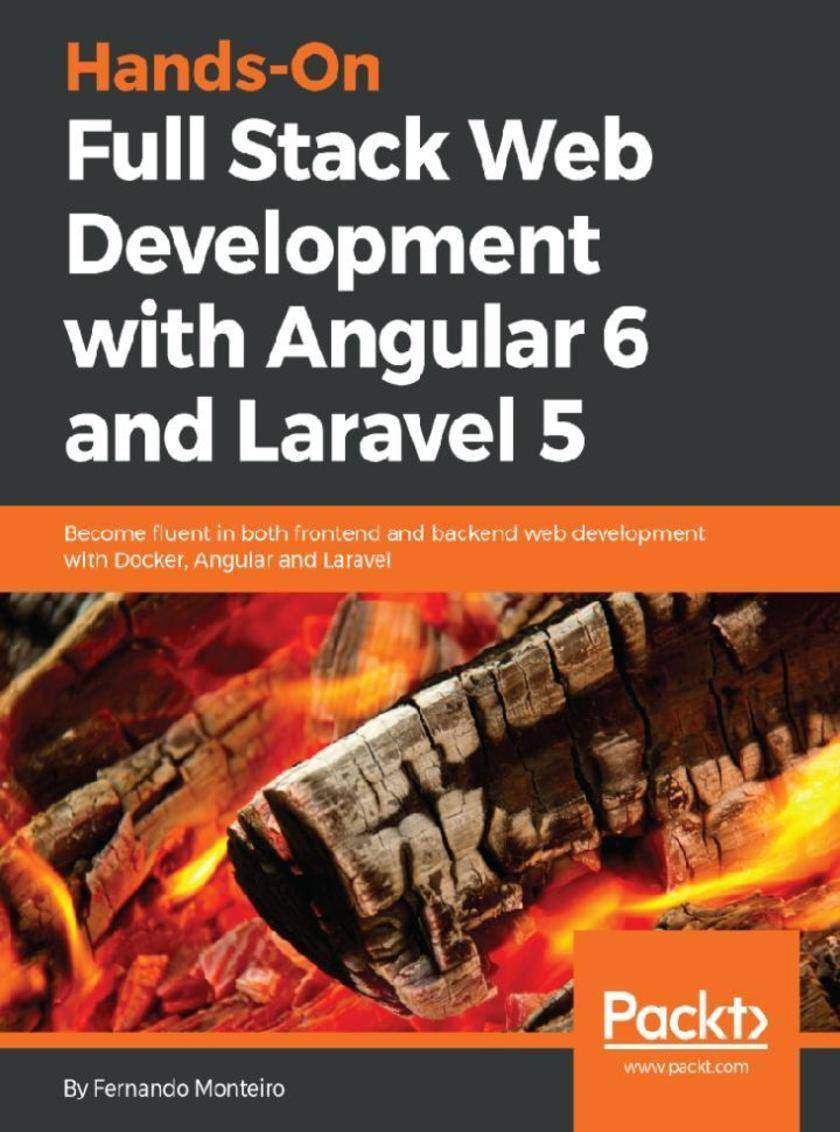
Hands-On Full Stack Web Development with Angular 6 and Laravel 5
¥78.47
Implement intelligent agents using PyTorch to solve classic AI problems, play console games like Atari, and perform tasks such as autonomous driving using the CARLA driving simulator Key Features *Explore the OpenAI Gym toolkit and interface to use over 700 learning tasks *Implement agents to solve simple to complex AI problems *Study learning environments and discover how to create your own Book Description Many real-world problems can be broken down into tasks that require a series of decisions to be made or actions to be taken. The ability to solve such tasks without a machine being programmed requires a machine to be artificially intelligent and capable of learning to adapt. This book is an easy-to-follow guide to implementing learning algorithms for machine software agents in order to solve discrete or continuous sequential decision making and control tasks. Hands-On Intelligent Agents with OpenAI Gym takes you through the process of building intelligent agent algorithms using deep reinforcement learning starting from the implementation of the building blocks for configuring, training, logging, visualizing, testing, and monitoring the agent. You will walk through the process of building intelligent agents from scratch to perform a variety of tasks. In the closing chapters, the book provides an overview of the latest learning environments and learning algorithms, along with pointers to more resources that will help you take your deep reinforcement learning skills to the next level. What you will learn *Explore intelligent agents and learning environments *Understand the basics of RL and deep RL *Get started with OpenAI Gym and PyTorch for deep reinforcement learning *Discover deep Q learning agents to solve discrete optimal control tasks *Create custom learning environments for real-world problems *Apply a deep actor-critic agent to drive a car autonomously in CARLA *Use the latest learning environments and algorithms to upgrade your intelligent agent development skills Who this book is for If you’re a student, game/machine learning developer, or AI enthusiast looking to get started with building intelligent agents and algorithms to solve a variety of problems with the OpenAI Gym interface, this book is for you. You will also find this book useful if you want to learn how to build deep reinforcement learning-based agents to solve problems in your domain of interest. Though the book covers all the basic concepts that you need to know, some working knowledge of Python programming language will help you get the most out of it.
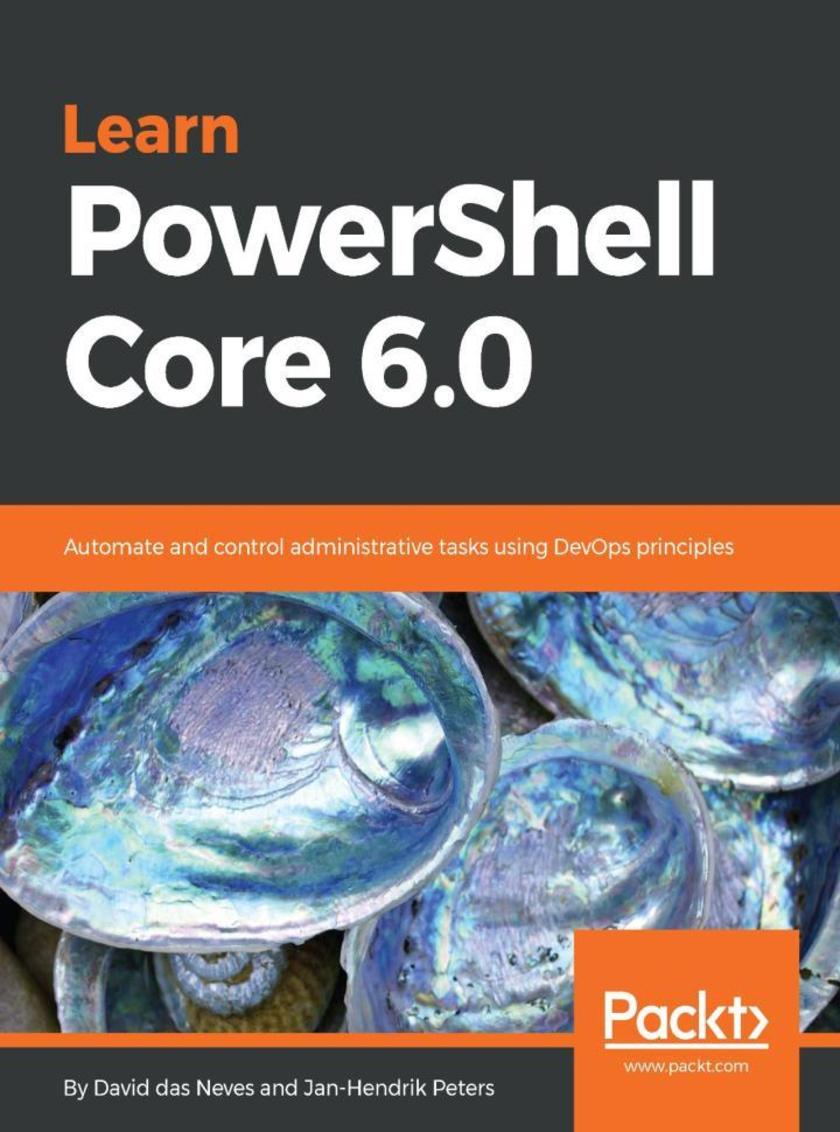
Learn PowerShell Core 6.0
¥78.47
Enhance your skills in expert module development, deployment, security, DevOps, and cloud Key Features *A step-by-step guide to get you started with PowerShell Core 6.0 *Harness the capabilities of PowerShell Core 6.0 to perform simple to complex administration tasks *Learn core administrative concepts such as scripting, pipelines, and DSC Book Description Beginning with an overview of the different versions of PowerShell, Learn PowerShell Core 6.0 introduces you to VSCode and then dives into helping you understand the basic techniques in PowerShell scripting. You will cover advanced coding techniques, learn how to write reusable code as well as store and load data with PowerShell. This book will help you understand PowerShell security and Just Enough Administration, enabling you to create your own PowerShell repository. The last set of chapters will guide you in setting up, configuring, and working with Release Pipelines in VSCode and VSTS, and help you understand PowerShell DSC. In addition to this, you will learn how to use PowerShell with Windows, Azure, Microsoft Online Services, SCCM, and SQL Server. The final chapter will provide you with some use cases and pro tips. By the end of this book, you will be able to create professional reusable code using security insight and knowledge of working with PowerShell Core 6.0 and its most important capabilities. What you will learn *Get to grips with Powershell Core 6.0 *Explore basic and advanced PowerShell scripting techniques *Get to grips with Windows PowerShell Security *Work with centralization and DevOps with PowerShell *Implement PowerShell in your organization through real-life examples *Learn to create GUIs and use DSC in production Who this book is for If you are a Windows administrator or a DevOps user who wants to leverage PowerShell to automate simple to complex tasks, then this book is for you. Whether you know nothing about PowerShell or just enough to get by, this guide will give you what you need to go to take your scripting to the next level. You’ll also find this book useful if you’re a PowerShell expert looking to expand your knowledge in areas such as PowerShell Security and DevOps.
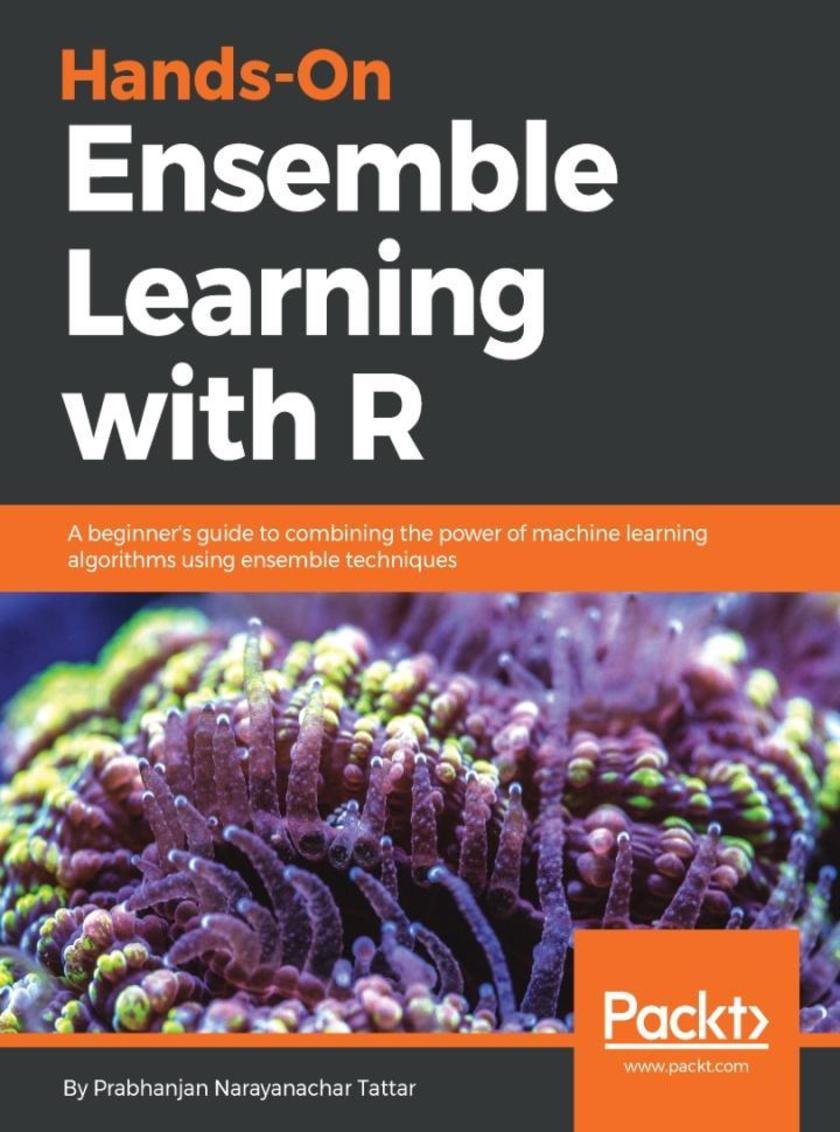
Hands-On Ensemble Learning with R
¥78.47
Explore powerful R packages to create predictive models using ensemble methods Key Features *Implement machine learning algorithms to build ensemble-efficient models *Explore powerful R packages to create predictive models using ensemble methods *Learn to build ensemble models on large datasets using a practical approach Book Description Ensemble techniques are used for combining two or more similar or dissimilar machine learning algorithms to create a stronger model. Such a model delivers superior prediction power and can give your datasets a boost in accuracy. Hands-On Ensemble Learning with R begins with the important statistical resampling methods. You will then walk through the central trilogy of ensemble techniques – bagging, random forest, and boosting – then you'll learn how they can be used to provide greater accuracy on large datasets using popular R packages. You will learn how to combine model predictions using different machine learning algorithms to build ensemble models. In addition to this, you will explore how to improve the performance of your ensemble models. By the end of this book, you will have learned how machine learning algorithms can be combined to reduce common problems and build simple efficient ensemble models with the help of real-world examples. What you will learn *Carry out an essential review of re-sampling methods, bootstrap, and jackknife *Explore the key ensemble methods: bagging, random forests, and boosting *Use multiple algorithms to make strong predictive models *Enjoy a comprehensive treatment of boosting methods *Supplement methods with statistical tests, such as ROC *Walk through data structures in classification, regression, survival, and time series data *Use the supplied R code to implement ensemble methods *Learn stacking method to combine heterogeneous machine learning models Who this book is for This book is for you if you are a data scientist or machine learning developer who wants to implement machine learning techniques by building ensemble models with the power of R. You will learn how to combine different machine learning algorithms to perform efficient data processing. Basic knowledge of machine learning techniques and programming knowledge of R would be an added advantage.




 购物车
购物车 个人中心
个人中心



